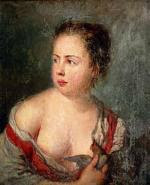Wednesday, March 02, 2011 - 
 No comments
No comments

 No comments
No comments
Announcing the Death of Journalist Marilyn Henry
This morning we received an email from Marc Masurovsky, co-founder of the Holocaust Art Restitution Project (HARP) and Project Director of the database “Cultural Plunder by the ERR: Database of Art Objects at the Jeu de Paume”:
Dear colleagues:
I regret to announce the passing of one of the most extraordinary journalists of the Jewish community who stood for the rights of Holocaust survivors throughout her active and dynamic existence. Her name: Marilyn Henry.
We at ARCA extend our condolences to the communities, family and friends of Marilyn Henry.She will be always remembered for her relentlessness, her tenacity, her love of all things Jewish, and, most importantly, for her sincere attachment to the truth, regardless of where the chips may fall. Among other things, she is the author of a critical history of the Claims Conference. She was on the verge of completing a major work on art restitution. Marilyn Henry died yesterday evening at 9:28pm at her home near Teaneck, NJ. I've lost a great friend and survivors have lost an advocate.Mr. Masurovsky included a few links to samples of her writings for the Jerusalem Post that we would also like to pass on to our readers:
http://www.jpost.com/Opinion/Columnists/Article.aspx?id=194271
http://www.jpost.com/Opinion/Columnists/Article.aspx?id=190774
http://www.jpost.com/Opinion/Columnists/Article.aspx?id=186287
http://www.jpost.com/Opinion/Columnists/Article.aspx?id=182475









